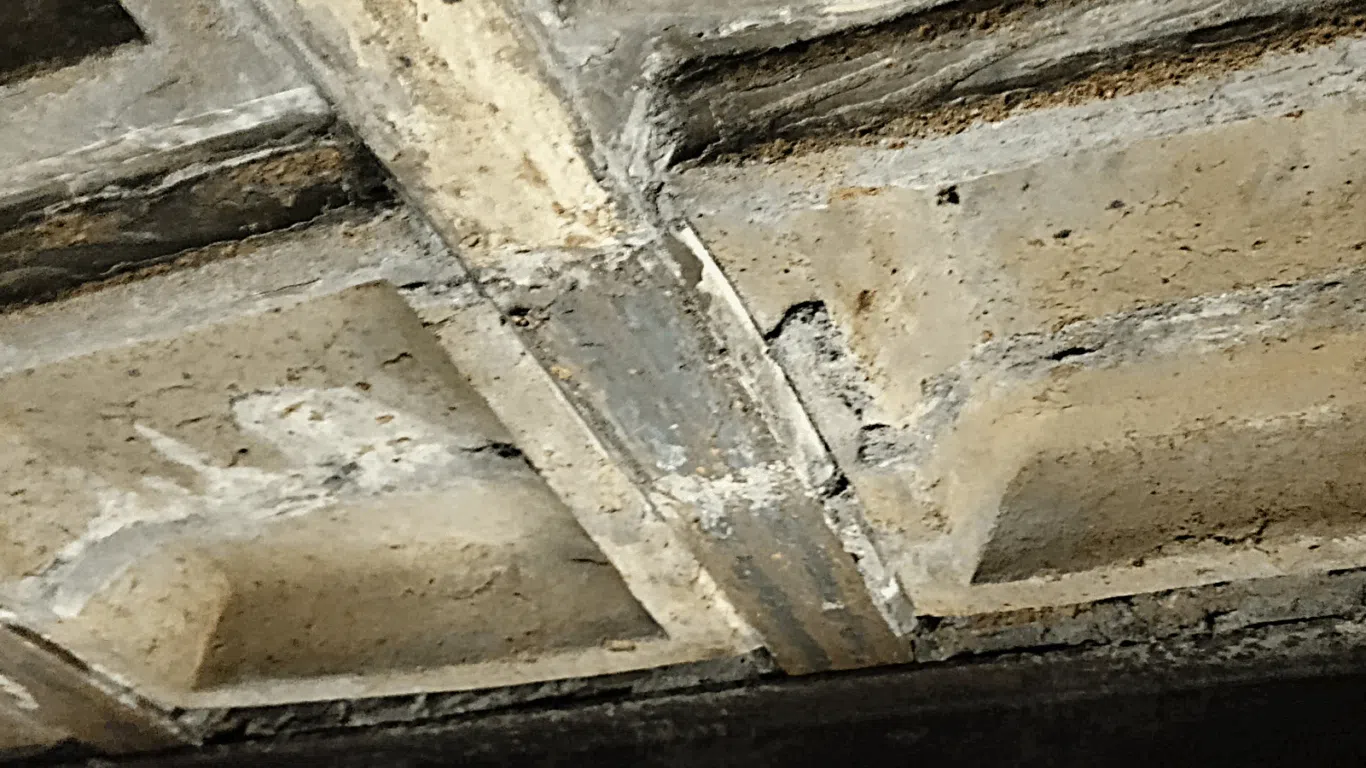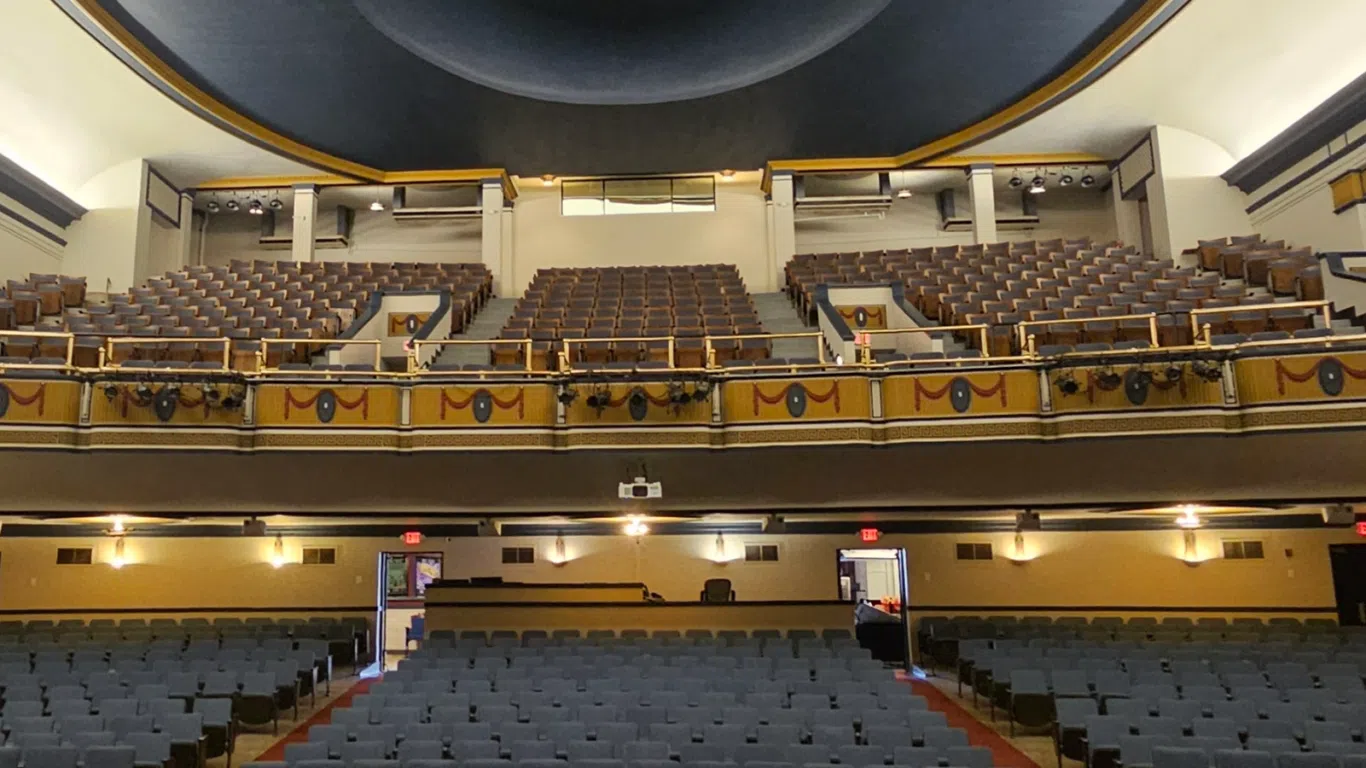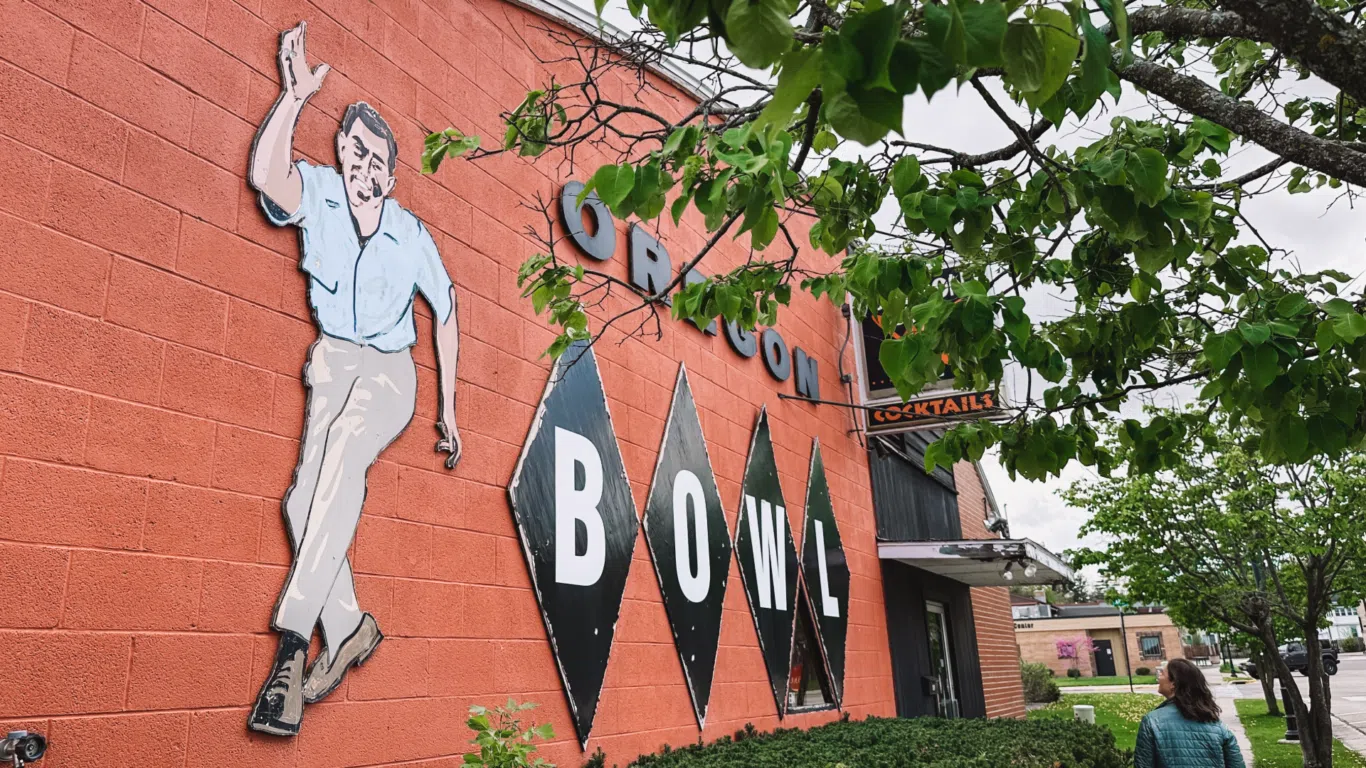We’re thrilled to announce that two of our building projects have received 2024 Landmarks Illinois Richard H. Driehaus Awards for Historic Preservation: The Old Courthouse Center in Woodstock, Illinois and the Midtown Faust building in Rockford, Illinois.
About the Old Courthouse Center
The historic landmark Courthouse, Sheriff’s House, and Jail, originally built in stages between 1857 and 1887, sits on the west side of the historic Woodstock Square, occupying approximately 30,000 square feet of mixed-use commercial space. The major renovation includes all three stories of the building with the addition of a glass and brick stair and elevator, enabling public accessibility to all levels. The space will be home to 5 main tenants and 3 micro retail units, which amounts to five bars, two full-service commercial kitchens, a brewery, a catering kitchen, a large event space, and additional meeting spaces. The Old Courthouse Center, as it will now be known, has new gas, water, sanitary, storm and power systems in all spaces, including geothermal heating and cooling, which adds up to an estimated 40% in energy savings.
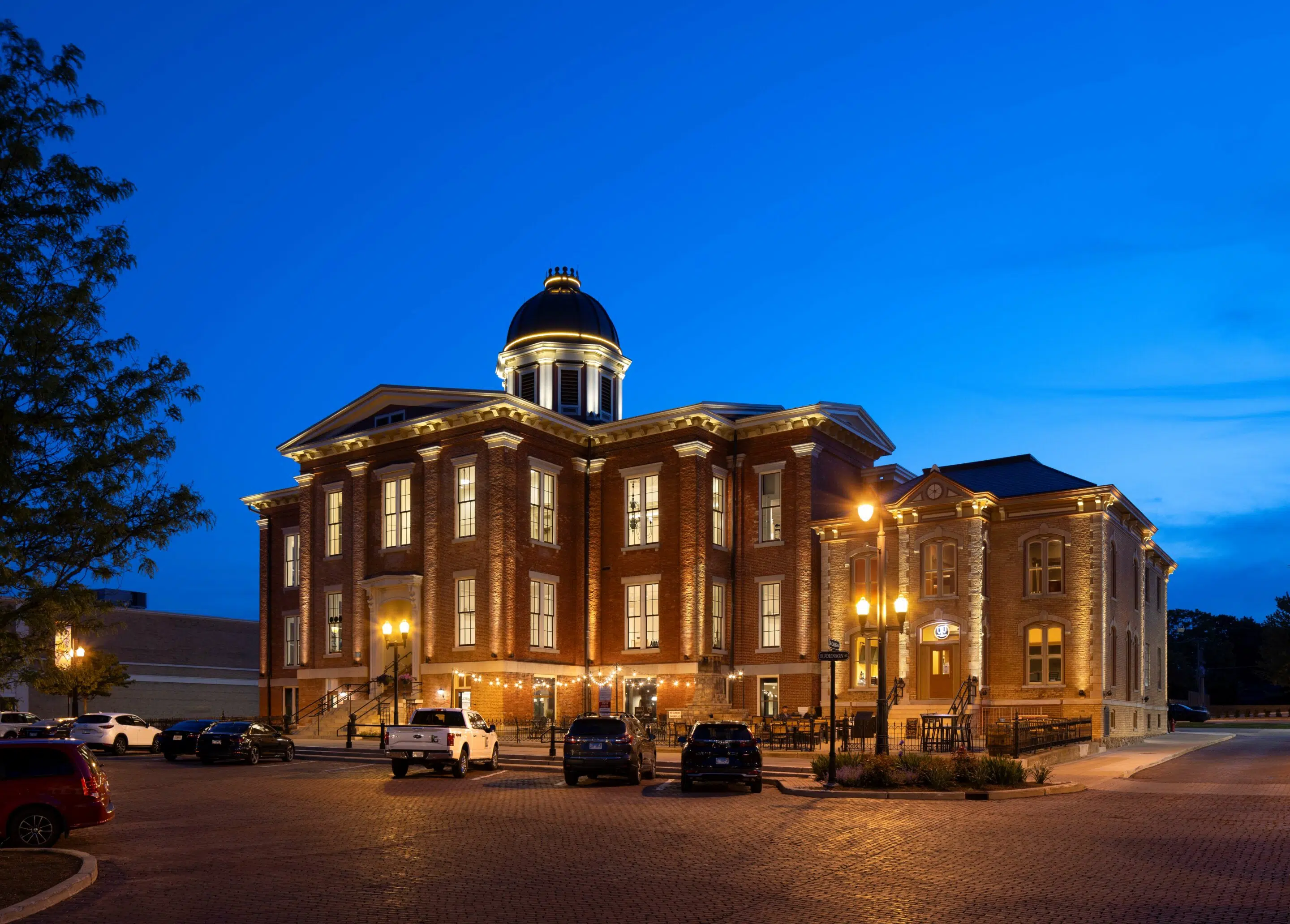
“The Old Courthouse has been an icon in Woodstock for over a century. Many similar buildings have been torn down in communities all around the Midwest, losing a part of their history that they’ll never get back. The City of Woodstock is fortunate to have forward thinking leadership that recognizes the importance of these historic structures and the determination to develop innovative solutions to difficult challenges to make a project like the courthouse work. We’re proud to have been able to be a part of not only preserving but injecting new life into downtown Woodstock with this project!,” says Studio GWA Principal, Aaron Holverson.
For over 10 years, Studio GWA has worked alongside the City of Woodstock in their efforts to restore and redevelop the Old Courthouse. The leadership at the city has had the foresight to recognize the importance of the Old Courthouse to the community and has found ways to secure its future. Aside from the full renovation, Studio GWA has provided design assistance for critical items including restoration of the copper cupola, lightning protection, structural modifications, woodwork restoration, and entry stair restoration to both buildings.
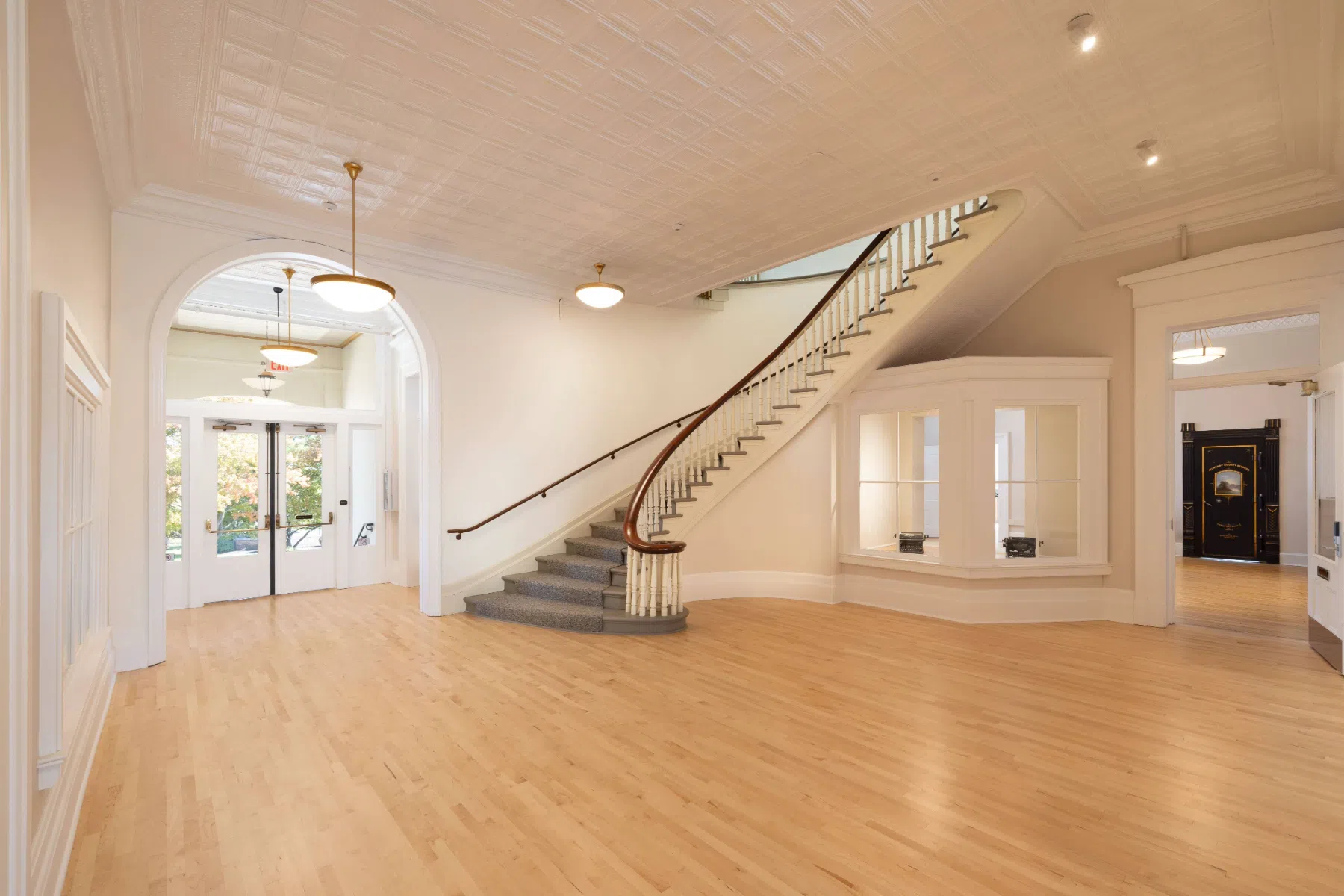
“The 19th-Century details and feel of the building have been retained while technology, energy-efficiency, accessibility, and conveniences have all been greatly enhanced,” says City Planner Darrell Moore. “In short, this looks like a very old building, but it functions like a modern one. With these renovations, we believe The Old Courthouse Center will be a point of pride for many generations to come.”
The restoration project would not have been possible without Historic Tax Credits. Having been added to The National Register of Historic Places in 1974, the Old Courthouse already had in place a key factor for Historic-Tax-Credit-eligibility. However, as a tax-exempt entity, the City of Woodstock was unable to monetize the credits. To side-step this obstacle, the city partnered with PNC Bank and ownership and management was transferred to a for-profit LLC to which the city belongs, thereby opening the door to more than $5 million in state and federal Historic Tax Credits.
State and Federal Historic Tax Credits have been a powerful financial resource for many historic projects, providing tax credits to revenue-producing entities for building projects listed on the National Register of Historic Places or within a National Register Historic District. Studio GWA has been at the forefront of historic tax credit consulting for over 40 years, helping clients navigate the requirements of the National Park Service and the Secretary of the Interior’s Standards for Rehabilitation, resulting in a historically sensitive approach to a dynamic new use for any historic building.
About the Midtown Faust Building
The Midtown Faust is the historic renovation of a 3,500 square foot building at 1005 5th Avenue in the Midtown District of Rockford, Illinois. Brad and Sue Roos purchased the building in May 2017 to create a home for their woodshop. Far beyond being avid woodworkers, however, Brad and Sue are residents of and advocates for Midtown, and sought to redevelop a building that their friends, neighbors, and fellow business owners could be proud of.
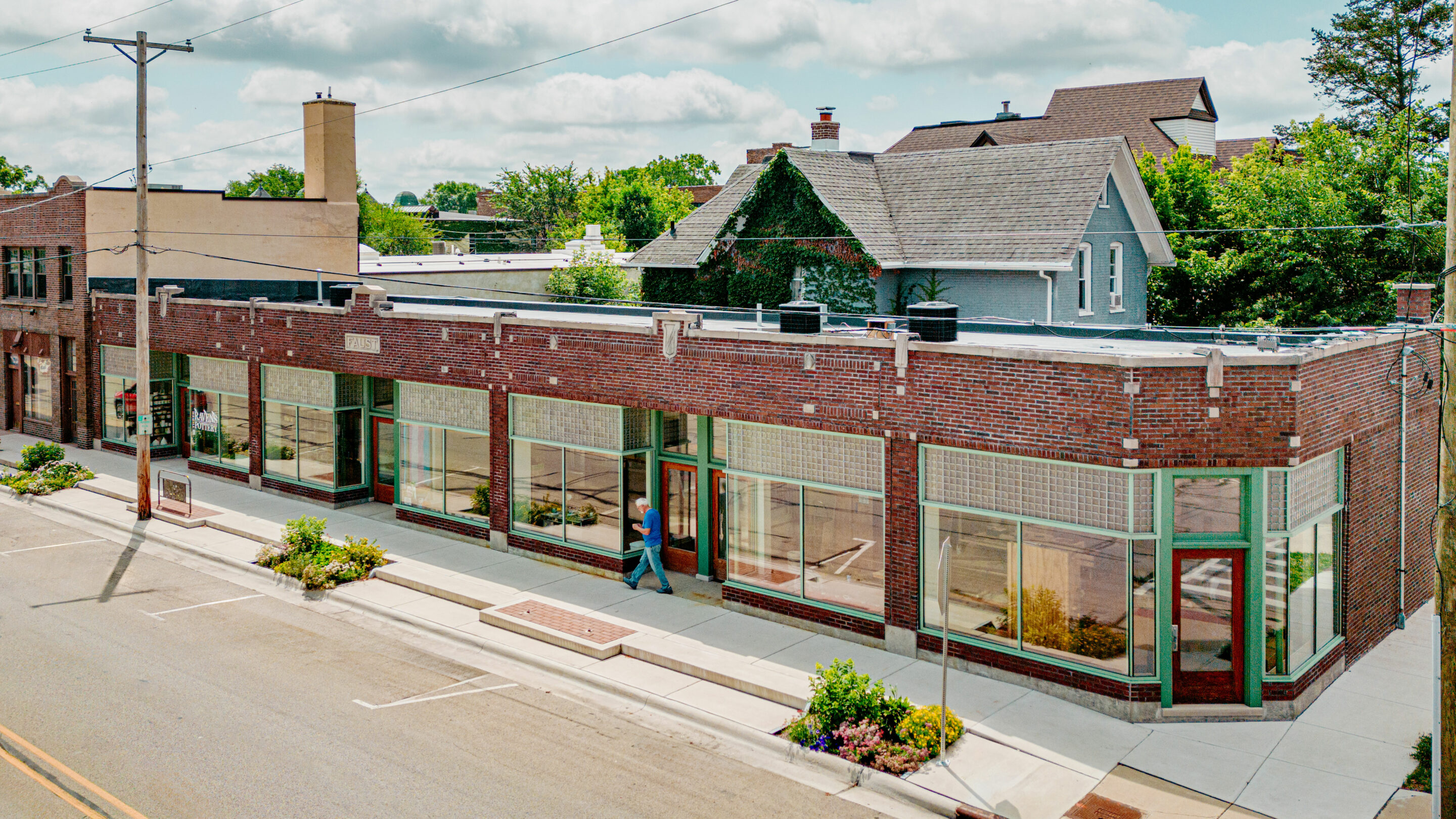
The renovation of the Midtown Faust building involved refurbishing both the street-visible main floor as well as the expansive lower level. Brad and Sue worked first with architects to stabilize the building after decades of water damage to the foundation of the building. Once the building was cleared of all debris and materials, Brad and Sue could see the openness and flexibility of the space. They were excited that it could be used for a variety of purposes. While Brad and Sue were able to reuse four of the seven solid oak entry doors, the biggest challenge was the restoration of the window treatment. To preserve the exterior façade, Brad and Sue had to install 16 new windows while removing, cleaning, and reassembling individual art glass panels. The tedious process of restoring the art panels took two years.
While the Midtown neighborhood has seen occasional redevelopment in the last 10 years, the investment pace is slow, and first floor commercial spaces have remained vacant. For Brad and Sue to take on this one-story, 3500 square foot commercial space, they had to take a different approach. The project required a creative approach to the physical renovation. The couple sought to engage their neighbors and offered employment opportunities. Scrappers came to recycle 20,000 pounds of heavy scrap metal, volunteers removed and recycled leftover debris, and tenants helped lay flooring. These localized group efforts continued to push the project closer to move-in.
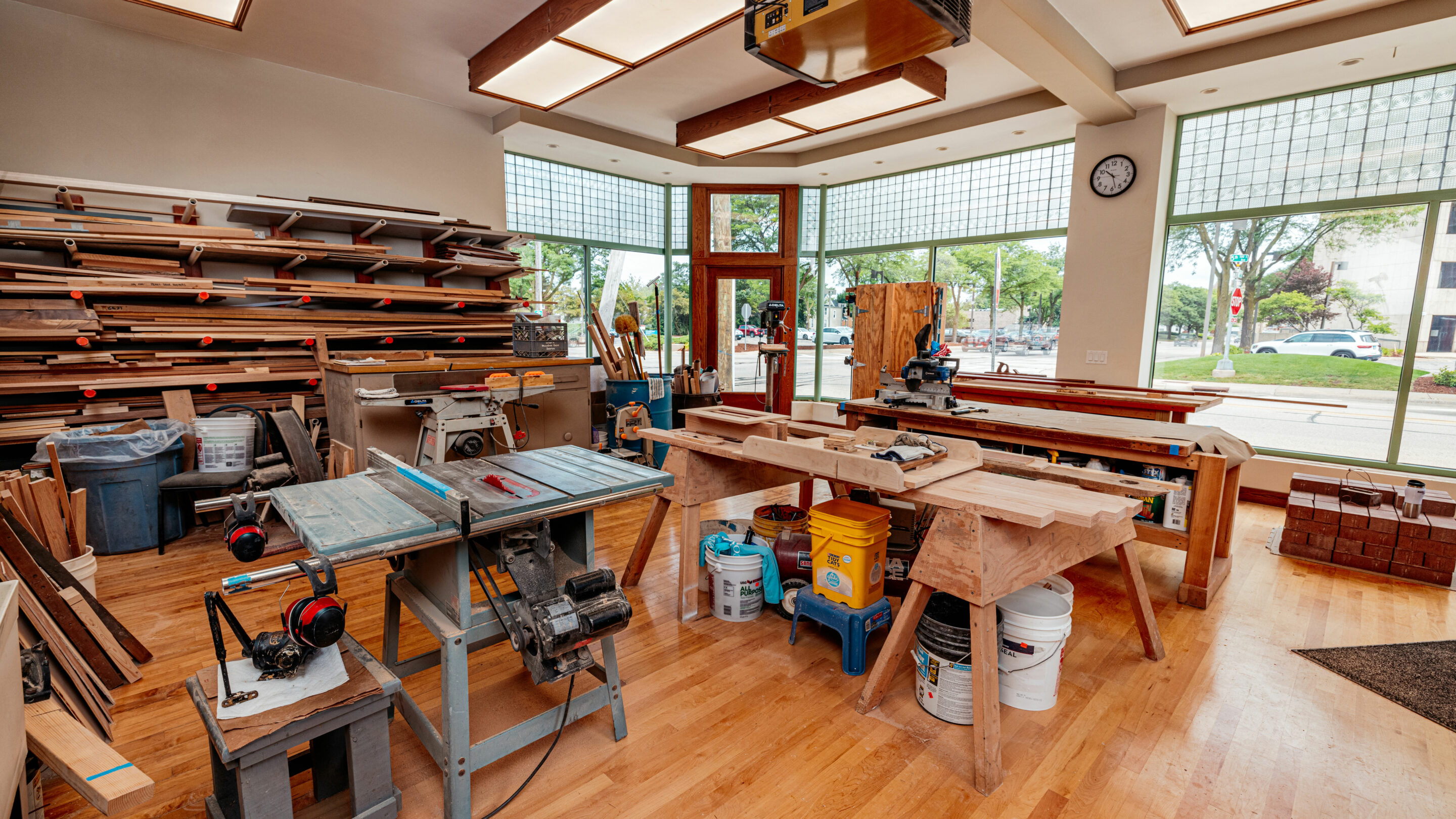
Sustainability was paramount throughout the project, and this is displayed in a variety of ways. This includes restoring the original maple flooring, salvaging and reusing lumber, sizing the electrical system to accommodate solar and heat pumps, and repurposing historic building components as display features. Outside the building, bike racks incorporate old saw blades into the design which hearken back to one of the building’s historic uses. The racks are framed with permeable pavers and natural plantings. Each decision made throughout the construction process has been centered around preserving what Midtown Faust is, while also making it a more efficient, sustainable, and equitable place.
While Historic Tax Credits (HTCs) are a common tool in adaptive reuse projects, the Rooses took it to a new level – a small-scale, 3,500 square foot level. It is most typical to see HTCs leaned upon for larger projects, with a syndicator coordinating the credits with high-tax-liability individuals or corporations. Here, the Rooses brought together numerous Rockford-based, small-scale investors. Brad and Sue knew that a circular economy benefits the community most, so they specifically sought local investor money. They’ve established a model for engaging smaller-scale investors to support community projects. Navigating IRS code, briefs, tax forms, and the HTC process can be overwhelming, but Brad and Sue with their team of accountants, attorneys, and HTC consultant showed grit by persevering through the fine details to unearth a new method to engage local investment.
About the Landmarks Illinois
Founded in 1971, Landmarks Illinois is the state’s leading voice for historic preservation. As a membership-based nonprofit organization, we promote preservation, restoration and adaptive reuse of buildings and sites of many types in order to leverage our past to create a better future. We know that blending old and new makes communities resilient and interesting places to live, work and play. We are People Saving Places for People. Learn more. Source: Landmarks Illinois 2024
About the Landmarks Illinois Richard H. Driehaus Foundation Preservation Awards
Since 1994, the Landmarks Illinois Richard H. Driehaus Foundation Preservation Awards has honored individuals, organizations, projects and programs whose work demonstrate a commitment to historic preservation. A generous grant from the Richard H. Driehaus Foundation enables Landmarks Illinois to present awards annually in various categories. The awards ceremony is held each fall. Additional information about the awards can be found here. Source: Landmarks Illinois 2024

